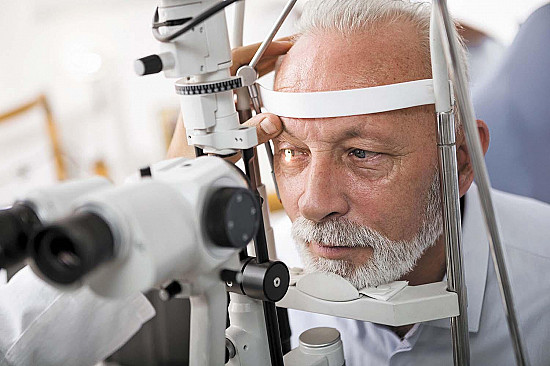Endophthalmitis
- Reviewed by Robert H. Shmerling, MD, Senior Faculty Editor, Harvard Health Publishing; Editorial Advisory Board Member, Harvard Health Publishing
What is endophthalmitis?
Endophthalmitis is an inflammation of the inside of the eye. Inflammation affects the vitreous fluid in center of the eye. Vitreous fluid is a clear, gel-like substance. The inflammation can extend to surrounding tissues responsible for vision. Endophthalmitis is rare.
In most cases, an infection triggers this inflammation. The infection can be caused by:
- bacteria
- fungi
- vruses
- parasites.
In the United States, most cases result from bacterial infections that follow eye surgery. For example, the condition may follow a procedure to treat cataracts or glaucoma. Bacteria also can enter the eye through an injury that pierces the eye.
Less often, an infection from elsewhere in the body can travel to the eye through the blood.
Symptoms of endophthalmitis
The most common symptoms are loss of vision and pain. Additional symptoms vary. They depend on what caused the eye infection:
- Postoperative endophthalmitis. The most common cause of this condition is a bacterial infection after cataract surgery. This serious problem can lead to permanent loss of vision. Symptoms vary slightly, depending on whether the infection occurs early (six weeks or less) or late (months or years) after surgery.
- Early symptoms can include:
- a dramatic decrease in vision in the affected eye
- eye pain that worsens after surgery
- redness of the affected eye
- swollen eyelids
- Late symptoms tend to be milder than early symptoms. They may include:
- blurred vision
- increased sensitivity to bright light
- mild eye pain
- Early symptoms can include:
- Post-traumatic endophthalmitis. Symptoms caused by a penetrating eye injury may include:
- a dramatic decrease in vision in the affected eye
- eye pain that becomes worse over time
- redness of the affected eye
- swollen eyelids
- Hematogenous endophthalmitis. This is when an infection spreads through the bloodstream and settles in the eye. Symptoms may develop gradually and be fairly subtle. For example:
- a mild decrease in vision over a period of a few weeks
- the appearance of floaters. These are dark, semi-transparent, floating shapes in the field of vision.
Diagnosing endophthalmitis
Endophthalmitis can lead to serious vision problems. A medical doctor who specializes in eye problems (an ophthalmologist) is usually the best health care provider to diagnose and treat it.
The doctor will review your symptoms. He or she will ask about your medical history, especially any eye surgery or eye trauma.
The doctor will examine your eyes. He or she will test how well you see in both eyes. The doctor will use an ophthalmoscope. This is a lighted instrument for looking inside the eye. An ultrasound of the eye may be ordered. Ultrasound can detect abnormal debris in the center of the eye.
The ophthalmologist may recommend a procedure called a vitreous tap. The doctor anesthetizes the eye and then uses a tiny needle to withdraw some of the eye's internal fluid. This fluid is tested for bacteria or other organisms.
Expected duration of endophthalmitis
For the best chance to preserve and restore your vision, the condition must be treated promptly. Once treatment begins, symptoms may begin to improve within a day or two. In many cases, eye pain and eyelid swelling lessen before vision gets better.
Preventing endophthalmitis
If you have had cataract surgery, you can help to decrease your risk of infection. To do so, follow your doctor's instructions for eye care after your surgery. Also, see your doctor regularly for follow-up eye exams.
To prevent endophthalmitis caused by eye trauma, use protective eyewear at work and during contact sports. Goggles, eye shields, and helmets can help protect against industrial debris that can pierce or cut the eyes.
Treating endophthalmitis
Treatment depends on:
- what caused the endophthalmitis
- the state of vision in the affected eye.
When the condition is caused by a bacterial infection, options include one or more of the following.
- Intravitreal antibiotics. Antibiotics are injected directly into the infected eye. Usually, some vitreous fluid is removed to make room for the antibiotic.
- Intravenous antibiotics. Antibiotics may be injected into a vein. This may be prescribed for patients with severe infection.
- Topical antibiotics. Antibiotics may be applied to the surface of the eye when there is a wound infection in addition to endophthalmitis.
- Vitrectomy. Part of the eye's infected vitreous fluid is removed. It is replaced with sterile saline or another compatible liquid. This is usually done only if vision loss is severe.
When the condition is caused by a fungal infection, doctors usually inject an antifungal medication directly into the infected eye. The medication may also be given intravenously, or the person may receive an oral antifungal drug.
The ophthalmologist will monitor your progress. You will have frequent eye exams to monitor whether the treatment is improving your vision or not.
When to call a professional
Endophthalmitis is a medical emergency. It can cause permanent loss of vision if not diagnosed and treated promptly.
Call your doctor immediately if you develop symptoms of this condition. This is particularly important if you have a history of:
- eye surgery
- eye trauma
- any condition that weakens your immune defenses.
Prognosis
With proper treatment, many people have a good prognosis.
Additional info
National Eye Institute
https://www.nei.nih.gov/
American Academy of Ophthalmology
https://www.aao.org/
About the Reviewer

Robert H. Shmerling, MD, Senior Faculty Editor, Harvard Health Publishing; Editorial Advisory Board Member, Harvard Health Publishing
Disclaimer:
As a service to our readers, Harvard Health Publishing provides access to our library of archived content. Please note the date of last review or update on all articles.
No content on this site, regardless of date, should ever be used as a substitute for direct medical advice from your doctor or other qualified clinician.















